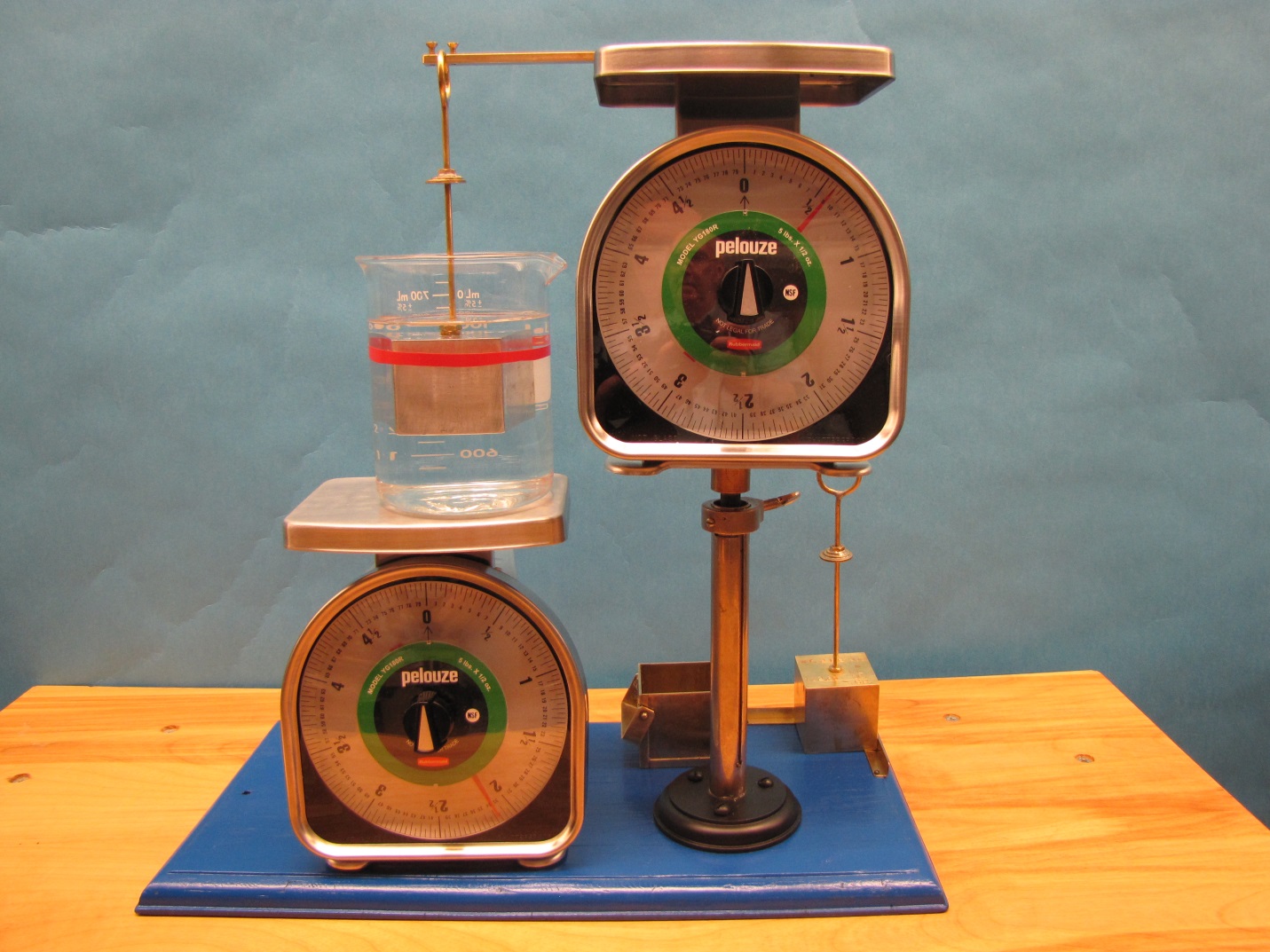Demos: 2B-09 Archimedes I

A cubic block is suspended from a scale in such a way that the scale reads the normal weight of the block. The block is then submerged in a beaker of water which also sits on a scale. It is shown that the reduction in reading on the upper scale is exactly equal to the increased reading on the lower scale. The lower scale is, in fact, registering the reaction to the buoyant force.
Directions: Hang the block from the arm protruding on the pan of the upper scale. Record the reading on each scale. Lower the block and its scale so that the block is fully submerged. Record the readings on both scales.
Suggestions for Presentation: Suggest to the students that you are going to show how the apparent weight of an object is reduced when it is submerged. At the same time, point out that the beaker is sitting on its own scale. The block will be submerged in the water but will not touch the bottom. Since the block is not in “contact” with the lower scale, will its reading change? Many will be surprised that it does. But if the fluid exerts an upward force on the block, by Newton’s Law III the block must exert an equal and opposite force on the water, which gets transmitted to the scale. (NOTE: Another block, identical in volume, but having a different mass, is available if you wish to show the basic Archimedes principle result that the loss in weight does not depend on the mass of the object submerged. However, this is the essence of Demo 2B - 8.)
Applications: A fish swimming in an aquarium technically adds to the weight of the aquarium, even though the fish isn’t “touching” it.
Last Updated: Nov 30, 2023 11:25 AM